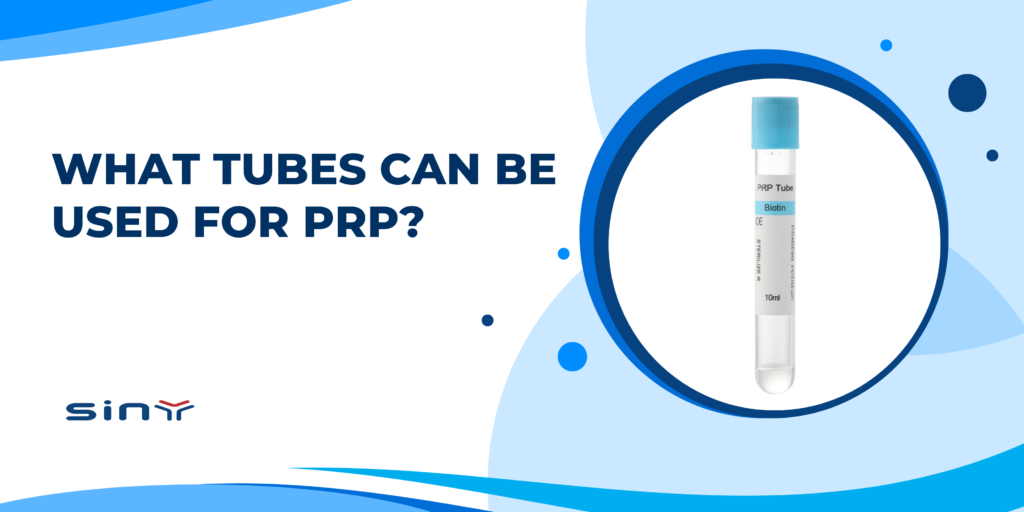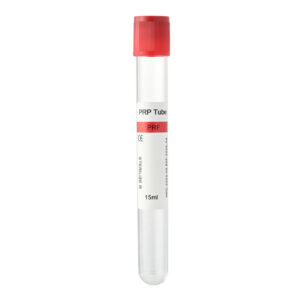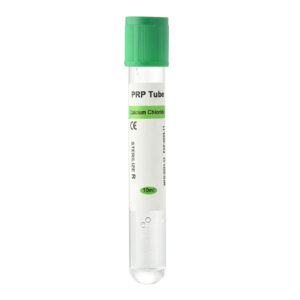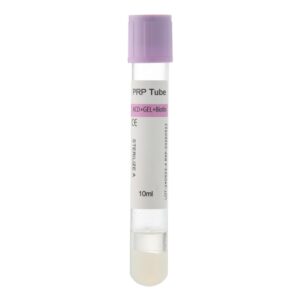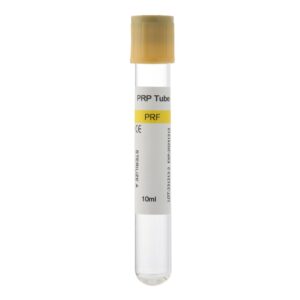What tubes can be used for PRP? Platelet-rich plasma (PRP) therapy has become a cornerstone treatment in aesthetics, hair restoration, and orthopedics due to its remarkable regenerative capabilities. However, the success of any PRP procedure depends not only on the clinician’s technique but critically on the quality of the PRP tubes used. With a vast array of options on the market, navigating the selection process can be challenging. This guide helps private clinics, healthcare professionals, and medical supply distributors understand how to choose the most effective and reliable PRP tubes for their needs.
Why the Right PRP Tube is Crucial for Success
A PRP tube is not just a standard blood collection tube; it is a specialized, sterile medical device engineered to optimize platelet concentration. The quality of the tube directly impacts platelet recovery rates, the purity of the final PRP, and ultimately, the therapeutic outcome. Using substandard or inappropriate tubes can lead to damaged or prematurely activated platelets, significantly diminishing the treatment’s effectiveness. More critically, tubes that lack proper sterilization and certification can pose serious safety risks to patients. Therefore, selecting high-quality PRP tubes is the first and most vital step in ensuring safe, effective clinical outcomes and upholding your practice’s professional reputation.
Key Factors to Consider When Choosing PRP Tubes
When sourcing PRP tubes, you must evaluate several key features to ensure they meet your clinical standards and deliver consistent results:
- Anticoagulant Type: The anticoagulant used is critical for preserving platelet viability for different applications.
- Acid Citrate Dextrose Solution A (ACD-A): Widely used in orthopedics, sports medicine, and aesthetics, ACD-A is excellent at maintaining the biological activity of platelets.
- Sodium Citrate: Another ideal choice, sodium citrate effectively preserves platelet vitality and function, making it suitable for orthopedics, hair regeneration, and cosmetic treatments.
- Heparin: While an effective anticoagulant, heparin can sometimes interfere with platelet activation and function, which may be less ideal for certain PRP applications.
- Separation Gel Quality: A high-quality separation gel forms a clean, stable physical barrier during centrifugation. This is essential for effectively separating the platelet-rich plasma from red and white blood cells. A superior gel simplifies the extraction process and ensures the high purity of the final product.
- Material and Certification: Tubes should be made from medical-grade polymers to guarantee they are sterile and pyrogen-free. Look for products that have obtained international certifications such as ISO or CE, which serve as proof of quality and a commitment to patient safety.
- Volume and Specifications: Choosing the appropriate tube volume (e.g., 10mL, 12mL, 15mL) based on the treatment area allows for more precise dosage control and helps prevent unnecessary waste.
The Importance of a Trusted Product Supplier
Beyond the technical specifications of the tube itself, your choice of supplier is equally important. A reputable supplier does more than just sell a product; they provide a partnership. They offer high-quality, medically certified products, backed by professional technical support and a stable supply chain. An experienced supplier understands the challenges of clinical practice and can offer solutions tailored to your specific needs. Partnering with a well-regarded company provides peace of mind, ensuring you receive a reliable product and allowing you to focus on what matters most: delivering exceptional care to your patients.
FAQs
Q1: Can I use standard vacuum blood collection tubes for PRP preparation?
No. Standard blood tubes are not designed for the concentration and preservation of platelets. Their internal additives and materials can damage platelets, fail to produce viable PRP, and may even introduce safety risks. Manufacturers specifically engineer professional PRP tubes to maximize the concentration and activity of platelets.
Q2: How do I know which anticoagulant is best for my clinical application?
Both ACD-A and Sodium Citrate are widely recognized as the most suitable anticoagulants for PRP preparation because they effectively maintain platelet function. The choice may depend on your specific treatment protocol. For instance, in hair restoration or tissue repair, where clinicians desire a rapid release of growth factors, they may prefer ACD-A as the option.
Q3: What is the difference between PRP tubes with and without a separation gel?
Tubes with separation gel offer greater convenience and consistency, effectively separating PRP from red blood cells, which is ideal for clinics seeking efficiency and standardized procedures. Tubes without gel offer more flexibility for the operator but require a higher level of technical skill for extraction.
Q4: What product certifications should I look for when purchasing?
Always choose products that carry a CE mark or are certified under a quality management system like ISO 13485. These certifications indicate that the product complies with strict international safety and quality standards for medical devices.

